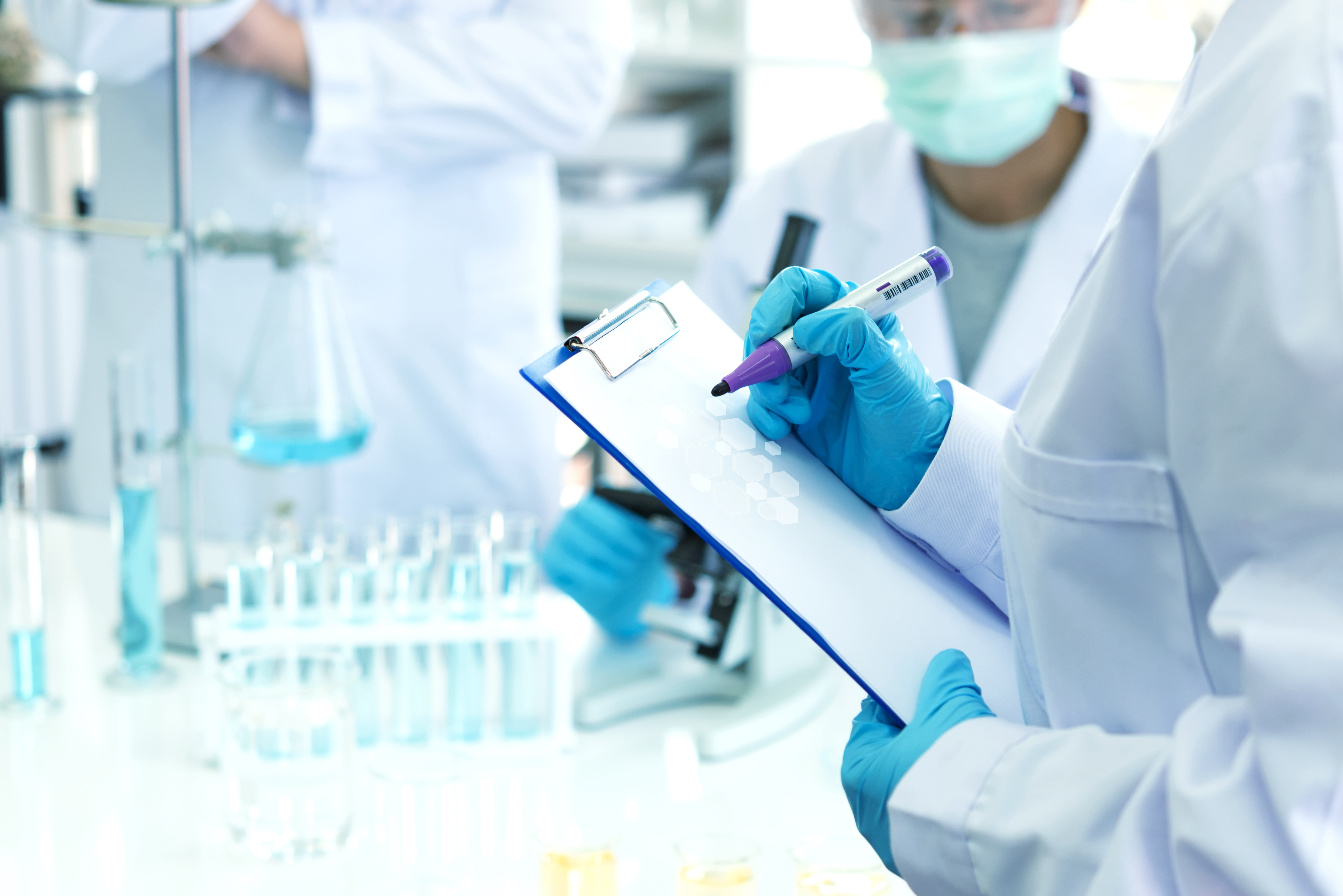As industry advancements and regulatory landscapes evolve, implementing Good Manufacturing Practices (GMP) and Current Good Manufacturing Practices (cGMP) has become crucial. Manufacturers striving to maintain cutting-edge compliance and operational excellence understand the key differences between the two, which we explore below.
About GMP & cGMP
Good Manufacturing Practices (GMP) are regulations that ensure the consistent production and control of products according to quality standards. These guidelines are crucial in pharmaceutical manufacturing to minimize risks that cannot be eliminated by testing the final product. GMP covers all aspects of production, from the starting materials, premises, and equipment to staff training and personal hygiene.
(cGMP) are the “continuously updated” version of GMP guidelines. The ‘current’ in cGMP indicates that manufacturers must use up-to-date technologies and systems to comply with the regulations. cGMP requirements are more stringent, reflecting the latest standards in manufacturing, quality control, and compliance. The goal is to ensure manufacturing processes adapt to evolving best practices and technological improvements to guarantee the highest quality products.
Importance of Both Guidelines in Ensuring Product Quality and Safety
Both GMP and cGMP are crucial for maintaining high quality and safety standards in the production of pharmaceuticals, medical devices, food, and other regulated products. GMP ensures that products are manufactured under controlled conditions, minimizing risks such as contamination, mix-ups, and errors.
In contrast, cGMP incorporates the latest technological advancements and scientific knowledge, ensuring that manufacturing processes are compliant with current standards and capable of producing safer and more effective products. Adherence to these guidelines helps protect consumers, maintain product integrity, and ensure regulatory compliance.
Key Differences Between cGMP and GMP
The addition of the term “current” in cGMP signifies a critical distinction. It implies that manufacturers must continually update their processes and facilities to incorporate the latest advances in technology and science. cGMP regulations are dynamic and evolve, reflecting ongoing advancements and emerging best practices in the industry.
Companies adhering to cGMP must invest in continuous improvement and modernization of their manufacturing processes to meet the most up-to-date standards. This helps maintain the highest product quality and safety levels, ensuring manufacturers remain competitive and compliant with regulatory expectations.
Complying with cGMP can be significantly more expensive than adhering to traditional GMP standards. Implementing the latest technologies and systems often involves substantial investments in new equipment, training, and process upgrades.
The need for ongoing updates and continuous improvement can lead to higher operational costs. These investments are crucial for maintaining regulatory compliance and ensuring the production of high-quality, safe products.
GMP compliance may have lower initial costs but may not provide the same level of assurance regarding the latest quality and safety standards.
Technology and Innovation Requirements in cGMP
One of the defining features of cGMP is its requirement to incorporate advanced technology and innovative practices in manufacturing. This includes using state-of-the-art equipment, automation, real-time monitoring systems, and advanced analytical techniques. These technologies enhance the precision, efficiency, and reliability of manufacturing processes.
For instance, real-time monitoring systems can detect potential issues before they become significant problems, allowing timely interventions. Integrating advanced technologies also facilitates better data management, traceability, and compliance with regulatory requirements. Embracing innovation ensures that manufacturing processes comply with current standards and are positioned for future advancements.
Overview of Common GMP Guidelines & Regulators
Among the most recognized GMP guidelines are those from the United States -US FDA 21 CFR.
The US FDA’s 21 CFR (Code of Federal Regulations) Parts 210 and 211 outline the minimum requirements for the methods, facilities, and controls used in the manufacturing, processing, and packing drug products. Both guidelines emphasize the need for consistent quality, proper documentation, and stringent control measures to prevent contamination, mix-ups, and errors.
Other notable regulatory bodies include the European Medicines Agency (EMA), the World Health Organization (WHO), and the Pharmaceutical Inspection Convention and Pharmaceutical Inspection Co-operation Scheme (PIC/S), which aims to harmonize GMP standards across different jurisdictions. These organizations conduct regular inspections and audits to ensure manufacturers comply with GMP requirements.
Legal Consequences of Non-Compliance
Non-compliance with GMP guidelines can result in severe legal and financial consequences for manufacturers. If deficiencies are identified, regulatory bodies have the authority to issue warning letters, impose fines, and enforce product recalls.
In some cases, non-compliance can lead to the suspension or revocation of manufacturing licenses, effectively halting production and distribution. Failure to comply with GMP regulations can also damage a company’s reputation, erode consumer trust, and lead to significant financial losses. Legal actions, including lawsuits, may also arise from non-compliance, further compounding the negative impact on the organization.
Ensuring Data Completeness and Security
Ensuring data completeness and security is a cornerstone of cGMP compliance. Manufacturers must implement robust data collection and management systems that capture all relevant manufacturing information. This includes detailed records of production processes, quality control tests, equipment maintenance, and personnel training.
Data security measures, such as encryption, access controls, and regular backups, are essential to protect sensitive information from unauthorized access and data breaches.
Effective cGMP compliance requires clear ownership and access control assignments. Designated personnel must be responsible for each step of the manufacturing process, including its execution and oversight. Assigning ownership ensures accountability and facilitates efficient management of cGMP practices. Access control mechanisms should be in place to restrict data access to authorized personnel only, preventing unauthorized modifications or deletions.
Implementing role-based access controls (RBAC) and robust documentation procedures helps track user activities and ensures that all actions are properly recorded and monitored.

Conducting Frequent Audits for Compliance and Accuracy
Frequent audits are essential for maintaining cGMP compliance and ensuring accuracy in manufacturing processes. Regular internal audits help identify potential areas of non-compliance and provide opportunities for corrective actions before external customer or regulatory inspections.
- Audits should cover all aspects of the manufacturing process including production, quality control, documentation, and personnel training.
- External audits by third-party organizations provide an unbiased assessment of compliance status and can help build credibility with regulatory authorities.
- Continuous auditing and monitoring ensure that any deviations from cGMP standards are promptly addressed and rectified.
The regulatory landscape for cGMP is constantly evolving, with new guidelines and requirements being introduced regularly. Manufacturers must stay informed about these changes and adapt their processes accordingly to maintain compliance.
Implementing a proactive approach to regulatory changes, such as updating standard operating procedures (SOPs), training programs, and quality management systems, ensures that manufacturers remain compliant with the latest standards.
Staying ahead of regulatory changes helps mitigate risks and ensures the continued production of safe and effective products.
Importance of Electronic Quality Management Systems (eQMS)
Electronic Quality Management Systems (eQMS) are crucial in ensuring cGMP compliance by automating and streamlining quality management processes. eQMS integrates various aspects of quality management, such as document control, training management, audit management, and corrective and preventive actions (CAPA).
By digitizing these processes, an eQMS enhances data accuracy, improves traceability, and facilitates real-time monitoring of compliance activities. Using an eQMS ensures that all quality management activities align with cGMP standards and regulatory requirements.
- It improves data integrity by providing a centralized platform for storing and managing quality-related information. This reduces the risk of data loss and ensures that all records are complete and accurate.
- eQMS enhances efficiency by automating routine tasks, such as document approvals, training updates, and audit schedules. This allows quality management teams to focus on more strategic activities.
- It facilitates better communication and collaboration among departments, ensuring that quality management practices are consistently applied across the organization.
- An eQMS provides real-time insights into compliance status, enabling proactive identification and resolution of potential issues.
How CERDAAC Supports cGMP and GMP Compliance
Navigating the complexities of cGMP and GMP compliance can be daunting for manufacturers. As a leading cloud-based compliance and quality management solution provider, CERDAAC offers comprehensive support to help companies understand and adhere to these stringent guidelines.
It’s designed to streamline compliance processes, ensure data integrity, and facilitate real-time monitoring of all compliance activities. By providing detailed guidance on regulatory requirements and offering tools for documentation, training, and auditing, CERDAAC helps companies maintain high standards of quality and regulatory adherence. Key features include:
- Automated Workflow Management: CERDAAC automates routine compliance tasks, such as document approvals, training management, and audit scheduling, reducing the burden on staff and minimizing the risk of human error.
- Real-Time Monitoring and Reporting: The platform provides real-time updates on compliance activities, ensuring that any deviations are promptly detected and addressed. This improves the overall transparency and accountability of compliance efforts.
- Centralized Document Management: CERDAAC offers a centralized repository for all compliance-related documents, making it easy to store, retrieve, and manage records. This ensures that all documentation is complete, accurate, and accessible for audits and inspections.
- Comprehensive Training Programs: The platform includes tools for tracking training programs, ensuring that employees are well-informed about cGMP and GMP requirements and best practices.
Staying current with cGMP regulations is crucial for manufacturers to ensure compliance and maintain high product quality and safety standards.
Regulatory bodies continuously update cGMP guidelines to reflect new scientific discoveries, technological innovations, and industry best practices. Companies that fail to keep up with these changes risk non-compliance, which can lead to legal consequences, financial losses, and damage to their reputation.
Manufacturers need to invest in continuous education, regular audits, and advanced compliance management systems to stay current with the latest cGMP requirements. Contact us today to see how CERDAAC simplifies cGMP compliance.


